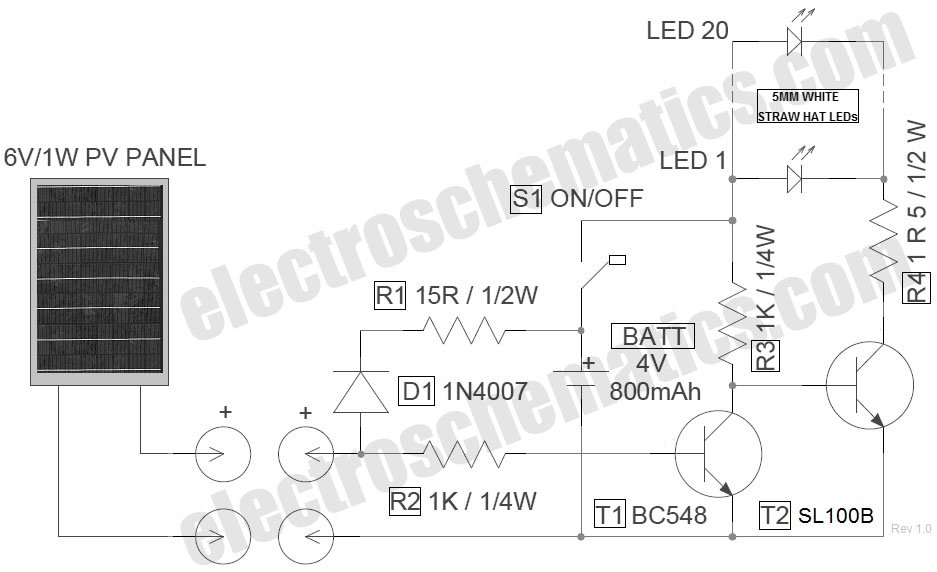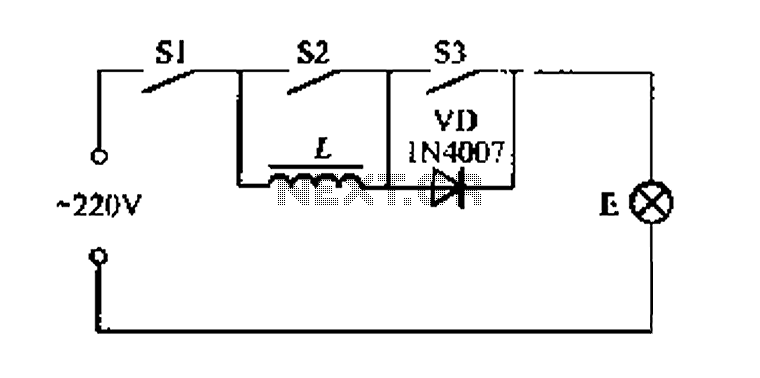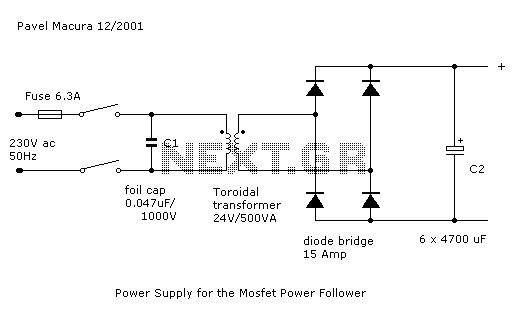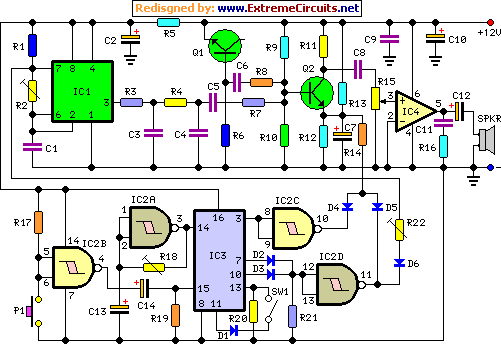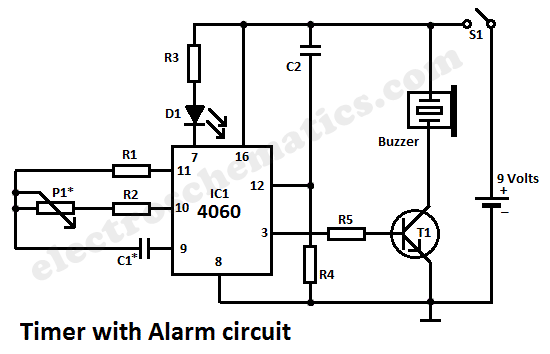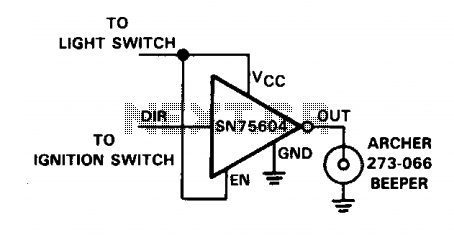
Capacitance Meter Circuit
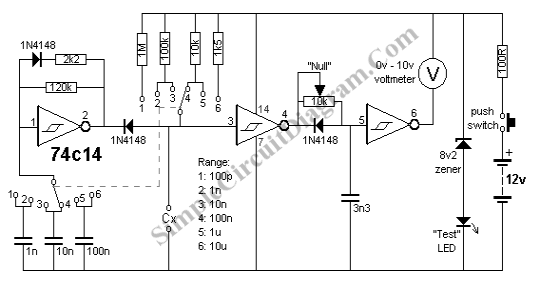
A capacitance meter is an essential instrument for electronics hobbyists and professional electronic technicians.
A capacitance meter is a specialized device used to measure the capacitance of capacitors in electronic circuits. It is a valuable tool for diagnosing and troubleshooting electronic components, ensuring they function within their specified parameters. The capacitance meter operates by applying a known voltage to the capacitor and measuring the resulting current flow, allowing it to calculate the capacitance value in farads, microfarads, or nanofarads.
When using a capacitance meter, it is important to observe the following operational principles: the meter should be calibrated regularly to ensure accurate readings, and it should be used in accordance with the manufacturer's instructions. The device typically features a digital display for easy reading of capacitance values, as well as various ranges to accommodate different capacitor sizes.
Moreover, advanced capacitance meters may include additional functionalities, such as the ability to test ESR (Equivalent Series Resistance), leakage current, and even the ability to test components in-circuit. This versatility makes capacitance meters invaluable for tasks ranging from simple hobby projects to complex professional repairs and assessments.
In summary, a capacitance meter is a fundamental tool in the electronics field, providing critical measurements that support effective circuit design, repair, and maintenance.Capacitance meter is one instrument that you should have in your toolbox if you are an electronics hobbyist, or if you`re a professional electronic technician.. 🔗 External reference
A capacitance meter is a specialized device used to measure the capacitance of capacitors in electronic circuits. It is a valuable tool for diagnosing and troubleshooting electronic components, ensuring they function within their specified parameters. The capacitance meter operates by applying a known voltage to the capacitor and measuring the resulting current flow, allowing it to calculate the capacitance value in farads, microfarads, or nanofarads.
When using a capacitance meter, it is important to observe the following operational principles: the meter should be calibrated regularly to ensure accurate readings, and it should be used in accordance with the manufacturer's instructions. The device typically features a digital display for easy reading of capacitance values, as well as various ranges to accommodate different capacitor sizes.
Moreover, advanced capacitance meters may include additional functionalities, such as the ability to test ESR (Equivalent Series Resistance), leakage current, and even the ability to test components in-circuit. This versatility makes capacitance meters invaluable for tasks ranging from simple hobby projects to complex professional repairs and assessments.
In summary, a capacitance meter is a fundamental tool in the electronics field, providing critical measurements that support effective circuit design, repair, and maintenance.Capacitance meter is one instrument that you should have in your toolbox if you are an electronics hobbyist, or if you`re a professional electronic technician.. 🔗 External reference
